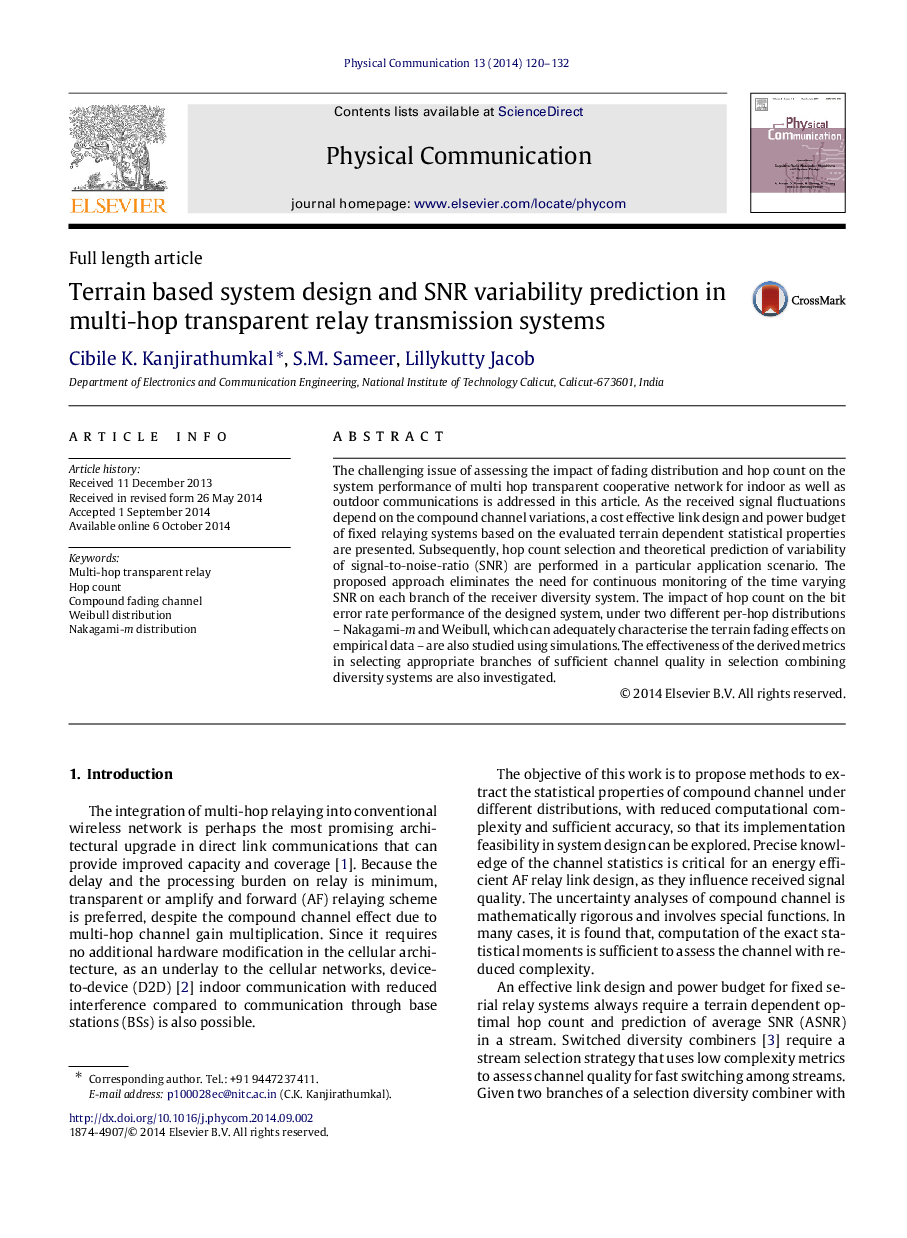| Article ID | Journal | Published Year | Pages | File Type |
|---|---|---|---|---|
| 466725 | Physical Communication | 2014 | 13 Pages |
The challenging issue of assessing the impact of fading distribution and hop count on the system performance of multi hop transparent cooperative network for indoor as well as outdoor communications is addressed in this article. As the received signal fluctuations depend on the compound channel variations, a cost effective link design and power budget of fixed relaying systems based on the evaluated terrain dependent statistical properties are presented. Subsequently, hop count selection and theoretical prediction of variability of signal-to-noise-ratio (SNR) are performed in a particular application scenario. The proposed approach eliminates the need for continuous monitoring of the time varying SNR on each branch of the receiver diversity system. The impact of hop count on the bit error rate performance of the designed system, under two different per-hop distributions–Nakagami-mm and Weibull, which can adequately characterise the terrain fading effects on empirical data–are also studied using simulations. The effectiveness of the derived metrics in selecting appropriate branches of sufficient channel quality in selection combining diversity systems are also investigated.
